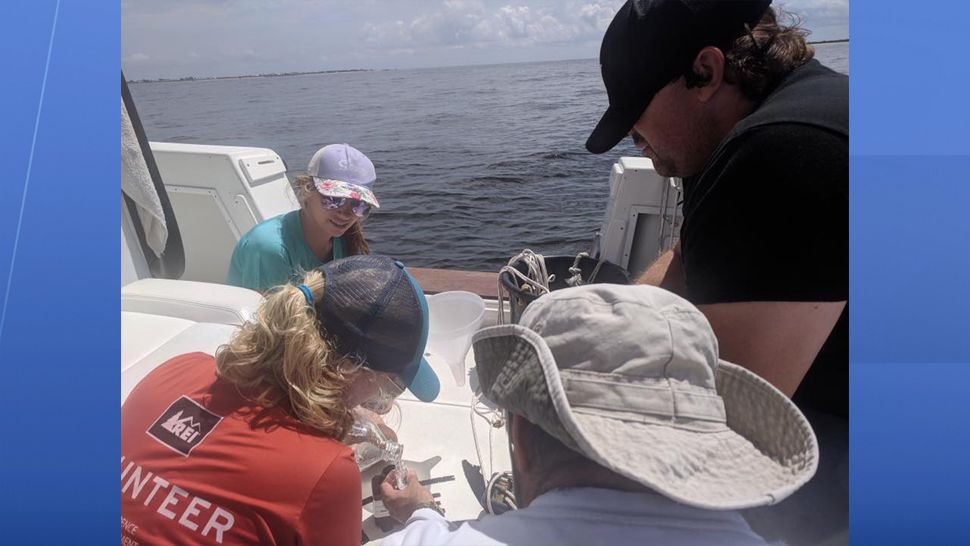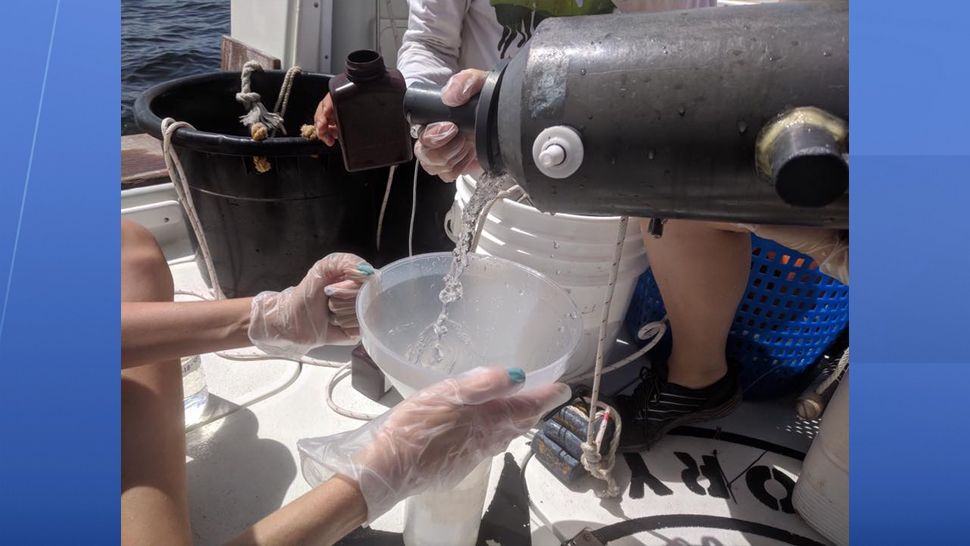TAMPA, Fla. -- Mote Marine Laboratory's phytoplankton ecology team, along with the Florida Wildlife Research Institute and Harmful Algal Bloom researchers, conducted a red tide survey along the Florida Gulf coast on Wednesday.
- Click here for the full red tide report
- Click here for more info on the current status of algal blooms in South Florida
- PREVIOUS STORY: Siesta Key Red Tide kills fish, keeps beachgoers away
Samples were collected at 19 stations spanning from the mouth of Tampa Bay to the mouth of the Caloosahatchee River. These samples are analyzed for detection and enumeration of Karenia brevis--the species responsible for Florida red tide--along with water quality parameters, phytoplankton community composition, and red tide toxins, officials said.
In Southwest Florida over the past week, K. brevis was observed at background concentrations in two samples collected from Pinellas County, background concentrations in two samples collected from Manatee County, background to high concentrations in 19 samples collected from or offshore of Sarasota County, high concentrations in six samples collected from Charlotte County, background to high concentrations in 17 samples collected from Lee County, and very low to high concentrations in 11 samples collected from Collier County.
FWC continues to receive reports of fish kills in Southwest Florida.
What is Florida Red Tide?
According to the Florida Fish and Wildlife Conservation Commission, the Red Tide along the west coast is the Karenia brevis, a strain of algae that is almost exclusive to Florida waters. There's no direct link to human activity as a cause of K. brevis, because it forms offshore and is transported in. But things like sewage and fertilizer runoff can fuel the growth of a bloom once it reaches the area.
K. brevis produces neurotoxins that can sicken and kill fish, seabirds, turtles and other marine life. They can also cause respiratory irritarion in humans.
Harvesting of shellfish like clams, oysters or mussels in a Red Tide area is banned. The toxins in the creatures can't be destroyed by cooking and freezing, and if you eat it you can get sick.
Fish are safe to eat as long as it is alive when caught and it is fileted before cooking -- do not eat it whole.
FWC says the muscle of crab, shrimp and lobster are not affected by Red Tide toxins.
- RELATED: FWC's Red Tide FAQ





